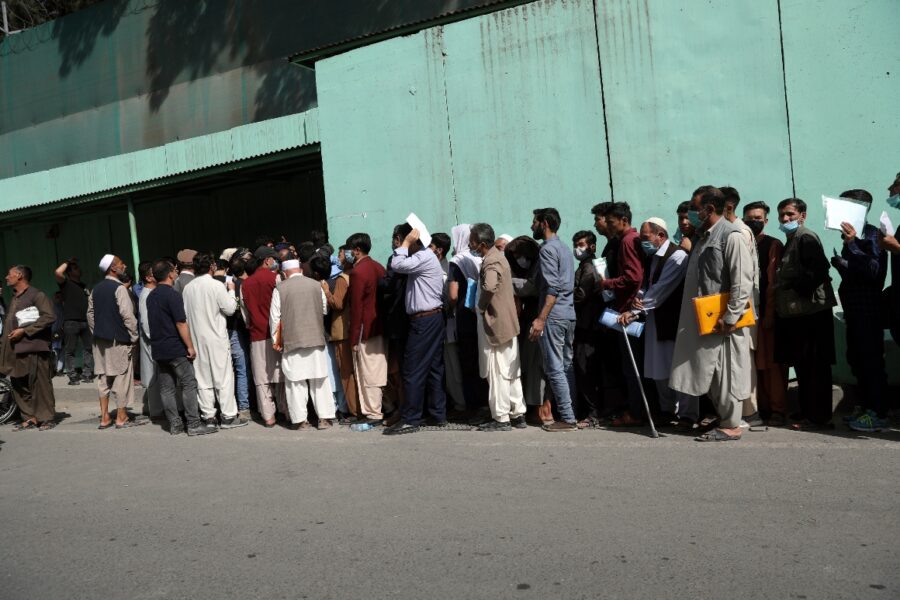‘They were sitting on their hands’: Insiders say Biden’s team wasted precious time on evacuating Afghans

During an interagency meeting early this summer, a Defense Department official was asked if the Pentagon had a list of all Afghans who worked alongside the United States during the 20-year war. The Pentagon representative responded that such a list didn’t exist.
Then during another interagency meeting in early July, this one classified and conducted via video conference, a State Department staffer detailed how they would eventually relocate vulnerable Afghans seeking special visas to the U.S. The official asserted that Kabul wouldn’t fall for six to 12 months, so they had plenty of time to hire more staff and position consular officers to the capital to process the 20,000-person backlog.
And in late July, two weeks before the Taliban captured their first provincial capital, a coalition of groups that work with special visa applicants wrote multiple emails to the State Department’s Afghanistan Task Force offering their assistance. Those emails were never returned.
These instances, detailed to POLITICO by five U.S. officials and people familiar with the situation, are indicative of how the administration wasted precious time and failed to prepare to evacuate thousands in danger as the Taliban plotted their comeback. Flaws in the planning and execution of the withdrawal have led to wrenching scenes of Afghans clinging to U.S. military cargo planes as they race out of Hamid Karzai International Airport in Kabul, where President Joe Biden has dispatched up to 7,000 troops to handle the chaos.
“They were sitting on their hands,” said a congressional aide who, like others, spoke on condition of anonymity to discuss internal matters. “They only started surging three to four weeks ago.” In fact, it was only on Saturday that the State Department task force approached those same activist organizations and sought their help to fill out a list with names of people needing relocation.
A State Department spokesperson didn’t deny these accounts, but said, “We are actively working on every possible contingency to make sure that we can help those who have helped us,” noting that 2,000 Afghans and their families are now in the United States.
A defense official confirmed no comprehensive list exists at the Pentagon, saying, “We are not aware of any database that tallies up a list of Afghans who worked with us over the last several years.” However, the official said there were likely partial lists held by other agencies or private contractors, but couldn’t confirm one way or the other.
Administration officials insist they’ve done all they can to extricate friendly Afghans, handling complicated logistics while winding down America’s military involvement in the war. They also say larger factors complicated their response, such as the previous administration’s disinterest in this issue, a decimated staff and the pandemic.
But a State Department official acknowledged that all explanations fall short. “If you want excuses, there are plenty to choose from, but they’ll be little comfort to the dead,” the official said.
Officials say they’ve been working to address the visa-applicant issue well before the breakdown in Afghanistan.
“We were asked by the State Department to provide support to their operation. That’s not a suggestion that is when SIVs became a priority for the government that has been for many years,” Garry Reid of the Pentagon’s Afghanistan Crisis Action Group told reporters on Monday.
Pentagon spokesperson John Kirby later noted on Tuesday that the administration will strive to evacuate all visa-seeking Afghans and U.S. citizens by Aug. 31, the planned withdrawal date for U.S. troops.
Others aren’t convinced President Biden and his team prioritized the special visa issue, saying they’ve long expressed political concerns that delayed their response. They “viewed it as the worst-case political outcome for them to bring Afghans to the U.S.,” fearing the domestic repercussions if one commits a terrorist act, a person familiar with the administration’s thinking speculated.
An administration official relayed a similar message to POLITICO on Monday: “It’s like they want the credit from liberals for ending the Trump cruelty to immigrants and refugees but they also don’t want the political backlash that comes from actual refugees arriving in America in any sort of large numbers.” White House officials have long denied this is the case.
Critics of the administration’s response say the U.S. should’ve prepared for this eventuality since at least February 2020, when former President Donald Trump signed a deal with the Taliban that would see U.S. troops leave by May of this year. And they say the administration definitely should’ve moved more quickly once Biden in April made the decision to pull U.S. troops out no later than Sept. 11.
In response, Maj. Gen. Hank Taylor said U.S. forces are doing all they can now to relocate those in danger. The airport “remains secure,” he told reporters Tuesday, noting the U.S. hopes flights will leave every hour to evacuate 5,000-9,000 people per day.
All of this is too little too late for activists. “They didn’t care,” said Matt Zeller, co-founder of No One Left Behind, a group that helps special immigrant visa applicants. “People need to be held accountable for this.”
Go To Source
Author: POLITICO

